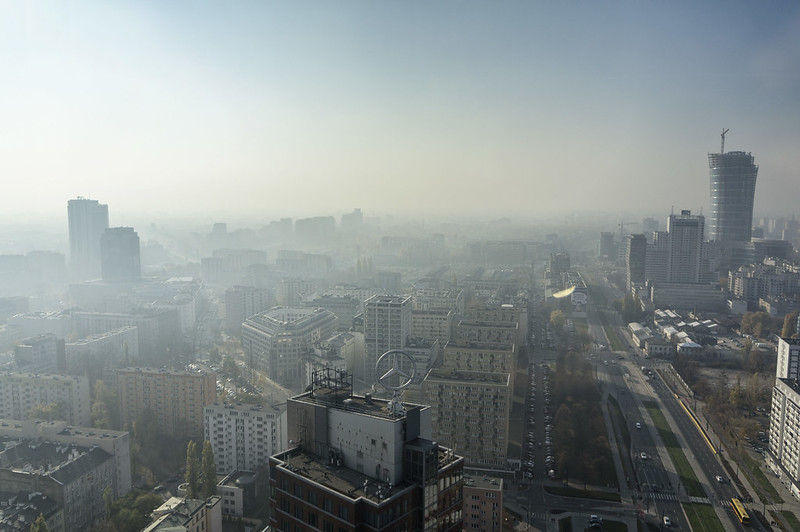Poland has the most polluted air in Europe, according to the Air Quality Life Index (AQLI), a new international ranking created by researchers at the University of Chicago.
The study also finds that life expectancy for inhabitants of two Polish cities with particularly bad air, Warsaw and Łódź, would rise by 1.2 years if steps were taken to reduce pollution.
Poland has long had some of Europe’s lowest air quality, especially in smaller towns. Smog here largely comes from residents burning low-quality coal and wood, the main heating fuels for over four million Polish homes.
Poland has 36 of Europe's 50 most polluted cites on an updated list published by @WHO (up from 33 on the previous ranking). 72% of Polish cities violate the EU's air quality target (second only to Bulgaria at 83%).
Chart via @UE: https://t.co/O0RnVwrBRF pic.twitter.com/tdRcTvtqz7
— Notes from Poland 🇵🇱 (@notesfrompoland) May 8, 2018
Poland’s reliance on coal-fired power, which accounted for 74% of the country’s electricity last year, also contributes to air pollution, notes Euronews.
Other European countries that fail to meet the WHO’s air pollution guidelines include Belarus, Slovakia, the Czech Republic, Slovenia, Hungary, Lithuania, and Latvia, according to the AQLI.
The index further finds that, since the creation of the European Environment Agency, the concentration of particulate pollution across the continent has dropped by 41% in two decades.
Thanks to these improvements, Europeans have gained an extra nine months of life on average – and two years in the coal heartlands of Poland’s southern Silesia Province.
The AQLI considers how air pollution concentrations affects human life expectancy. They concluded that airborne particles have a “more devastating impact” than factors such as cigarette smoking and diseases like HIV/AIDS.
In Poland, it is estimated that 45,000 people die prematurely each year as a result of pollution. A recent report by the Centre for Research on Energy and Clean Air found that cleaner air created by the coronavirus lockdown resulted in around 800 fewer premature deaths in Poland during April.
Poland’s level of particulate matter pollution (PM10) was an estimated 17% lower than would normally have been predicted (based on previous years’ air quality data but also taking account of current weather conditions). This was the fifth-highest drop in Europe, where the average fall was 12%.
In the World Health Organisation’s rankings of the EU cities with the most polluted air, Poland takes 36 of the top 50 places. Among all Polish cities, 72% exceeded the EU’s air quality target, second in the bloc only to Bulgaria (83%).
Earlier this year, the Polish city of Wrocław briefly had the second-worst air quality in the world, behind only Lahore in Pakistan, according to AirVisual, a Swiss-based air monitoring service. Kraków, another Polish city, was fourth on the list.
Conscious of Poland’s poor air quality, last year the government launched a clean air programme to tackle the problem. After being re-elected in October 2019, it also set up a new climate ministry.
Main image credit: Radek Kołakowski/Flickr (under CC BY 2.0)

Maria Wilczek is deputy editor of Notes from Poland. She is a regular writer for The Times, The Economist and Al Jazeera English, and has also featured in Foreign Policy, Politico Europe, The Spectator and Gazeta Wyborcza.




















